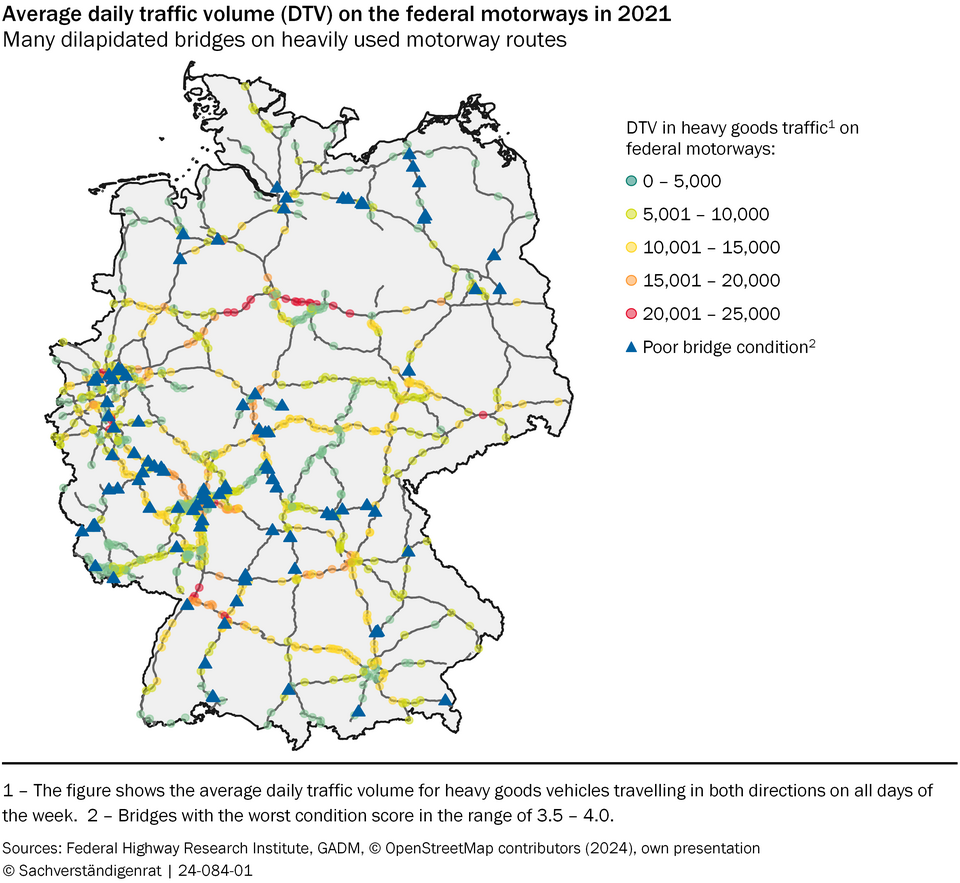PRESS RELEASE
Accelerate decarbonisation of freight transport by expanding the charging infrastructure for battery-electric trucks
- The deteriorating condition of the road and rail infrastructure hampers economic development in Germany. At the same time, freight transport needs to be decarbonised.
- To swiftly and efficiently decarbonise road freight transport, government support should initially prioritise expanding a nationwide charging infrastructure for battery-electric trucks.
- Shifting freight transport from road to rail is limited by the rail network’s lack of capacity. It is thus crucial to modernise and expand the rail infrastructure.
To decarbonise freight transport more quickly, government action should prioritise expanding the charging infrastructure. Advances in battery and charging technology have significantly extended the potential applications for battery-electric trucks. “Battery-electric trucks can already help to reduce emissions in road freight transport in the short term, unlike other low-emission technologies that aren’t yet market ready,” explains Monika Schnitzer, chair of the GCEE. “Given limited public funds and planning capacities, establishing a nationwide charging infrastructure for battery-electric trucks should be prioritised to accelerate market penetration of battery-electric trucks.”
Public areas along motorways should be swiftly allocated for fast-charging stations with minimal red tape to attract private investment in fast-charging stations. Simultaneously, electricity grid capacities must be expanded. Transparent communication on suitable charging station locations as well as the current and future availability of electricity grid capacities is also important.
Inexpensive and reliable freight transport is vital for Germany’s economy due to its central geographical location and large industrial sector. “The transport infrastructure is in poor condition. Without major investment it will further deteriorate, while freight transport will continue to increase and put a strain on the infrastructure,” explains Monika Schnitzer. Modernisation and expansion of the transport infrastructure should rely more on user
financing, for example via a mileage-based car toll. Allocating fixed funds to investment promotion agencies can stabilise infrastructure spending and ensure planning security.
The key lever for decarbonising freight transport is the decarbonisation of road freight transport. Freight transport accounts for 8 % of Germany's greenhouse gas emissions, with 98 % of this stemming from road freight. The Climate Protection Act Amendment reduces the importance of sector-specific targets in general. Yet, Germany must still meet mandatory European emission reduction targets in the transport and building sector by 2030.
Expand rail freight transport
Only 6 % of road-based freight is suitable for a shift to rail due to route and loading type constraints. However, bottlenecks in rail capacity prevent even this shift. Rail freight capacity and quality should therefore be improved, especially where rail already has efficiency advantages over road transport, such as on long, international routes. Implementing digital automatic coupling across Europe and building sufficient overtaking tracks could enhance the efficiency and capacity of rail freight.
Separating the infrastructure company’s ownership from the rest of the DB AG could strengthen competition in rail freight transport. To improve rail infrastructure quality, the infrastructure company should be responsible for both maintenance and replacement investments. Currently, DB AG is responsible only for maintenance costs, while the federal government finances replacement investments. This arrangement has caused delays or even neglect in efficient maintenance.

